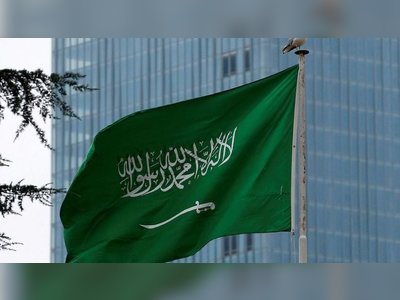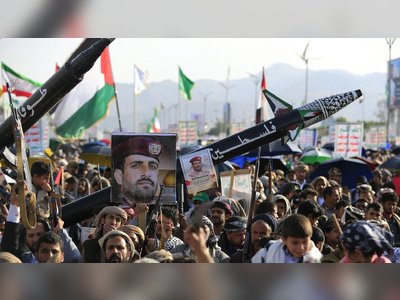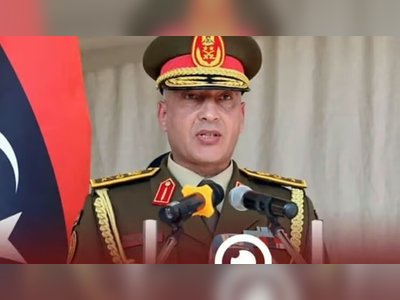
Estimation: 2-3 percent of the population is currently infected with SARS-CoV-2
This was explained by Xavier Sáez-Llorens, an infectologist and member of the Coronavirus Advisory Commission of the Ministry of Health (Minsa) , who explained that Panama could already have between 75,000 to 150,000 infected (2% to 3% of the population).
However, he said that in order to know the figure accurately, they should do a broad and representative serological sampling of the population.
Sáez-Llorens indicated that to achieve a potential herd immunity requires that 60% to 70% of the population be infected (3 million people). He specified that if the suppression and mitigation measures are not effective, that percentage could be reached this year.
If mitigation measures favorably impact and protect a significant population of susceptibles, a large part of that percentage would become infected in 2021, during intermittent outbreaks of the disease, he said. Hence, it is important to comply with the current recommendations.
Faced with this scenario, the "new normal" should occur gradually, asymmetrically and with social participation, said the Minister of Health, Rosario Turner.
Testing and mitigation, the keys to the 'new normal'
The quarantine objective was met because the availability of beds - both in hospital wards and intensive care units - and ventilators is maintained. In other words, two months after Covid-19 arrived in the country, 60% of the system's installed capacity has not yet been exceeded.
Now, the goal of the health authorities – and of the population – is to avoid considerable outbreaks of the SARS-CoV-2 virus once the quarantine is lifted in the coming days.
In this endurance race there are several factors that are key to reaching the objective: continue to massify diagnostic tests, identify and isolate positive patients, such as their contacts, and comply with mitigation measures (handwashing, physical distancing, teleworking, suspension of cultural activities, among others).
Testing will be the key
Xavier Sáez-Llorens, an infectologist and member of the Coronavirus Advisory Commission of the Ministry of Health (Minsa), stresses that the tests will be part of the “new normal”. Between 1,000 and 1,500 tests should be done per day.
"Although there is no publication that indicates the ideal amount of collected evidence, but taking into account the population and the level of positivity that is being observed in the country [1,000 to 1,500] is a reasonable number," said Sáez-Llorens during a virtually organized discussion.
However, the availability of tests and reagents could become an issue, since there is a high demand in the world.
Serological or antibody tests have another a key role in this endurance race. These tests are expected to be applied first to health personnel and members of the Joint Task Force, who have been in the front line of work. President Laurentino Cortizo announced on April 15 that they had purchased kits to do the tests, and that same week Gorgas confirmed that it was in the process of validating them. However, to date they have not begun to be applied.
Sáez-Llorens explained that serological tests allow people who had the disease to be traced two or three weeks before, or even months, and that they may be immune to the virus, which implies that they no longer represent risk.
PCR and serology tests are validated by the Gorgas Commemorative Institute for Health Studies (Icges).
Search for cases
It is important to detect positive cases and their respective contacts - he pointed out - to isolate them and find out, if they develop symptoms, and carry out tests on the contacts they have had.
“People begin to develop symptoms between day 5 and 6 of the disease; if on day 5 the person is detected by means of the test, they have had few contacts, however, when the infected person is detected on day 8, the contacts are greater”, summarized the infectologist.
The problem of tracking all cases is that the Minsa and the Social Security Fund do not have the personnel to carry out this strategy in the field. This will require staff training in companies, in biosafety, to provide their collaboration and even take samples from people.
It is important to detect the infections early to avoid large clusters of cases, because then it will not be easy to quickly cut the transmission of the virus, said Sáez-Llorens.
Serological tests will also help to identify the proportion of asymptomatic in Panama, and with these data it would be possible to know how many "real" infections occur for each case that the system identifies.
In Panama, it is estimated that between 75,000 and 150,000 people have been able to overcome the disease since the first case was confirmed on March 9. That is, 2% to 3% of the population, which shows that we are still far from the herd immunity that is reached when 60% to 70% of the population becomes infected.
When an infection spreads to a high enough percentage of the population, say 60% or 70%, these people become immune, and even if the virus tries to enter again, transmission is not sustained because there are fewer susceptibles, and therefore the society is protected.
The virus is present
Icges epidemiologist and virologist Jean Paul Carrera recalled that the purpose of the quarantine was to prevent the collapse of the health system and allow people who get sick to have the best possible care, but transmission of the virus is present.
The suppression measures adopted were good because the health system did not collapse and there is not a very high number of deaths, like in other countries, he stressed.
In fact, the projections of the Minsa show that for May 2 there were an estimated between 422 and 2,764 hospitalized and 151 to 987 people held in intensive care units, and the reality is quite different.
Carrera agreed with Sáez-Llorens that after lifting the quarantine the earlier a case is identified, the faster the contacts are identified and the transmission chains are cut.
The epidemiologist and director of the Metropolitan Health Region, Israel Cedeño , stressed that the Ministry has a quarantine removal strategy, which will be done in a coordinated and gradual manner by social and economic sector, based on the behavior of the virus by geographic area .
He stressed that this strategy will be established and will remain as an established process, with sustainability, to prevent the spread of any disease that can be avoided with physical distancing.
In short, the return to the “new normal”, once the hardest phase of the health crisis is over, will be gradual and we will face a daily routine that will involve the solidarity and cooperation of the population.











